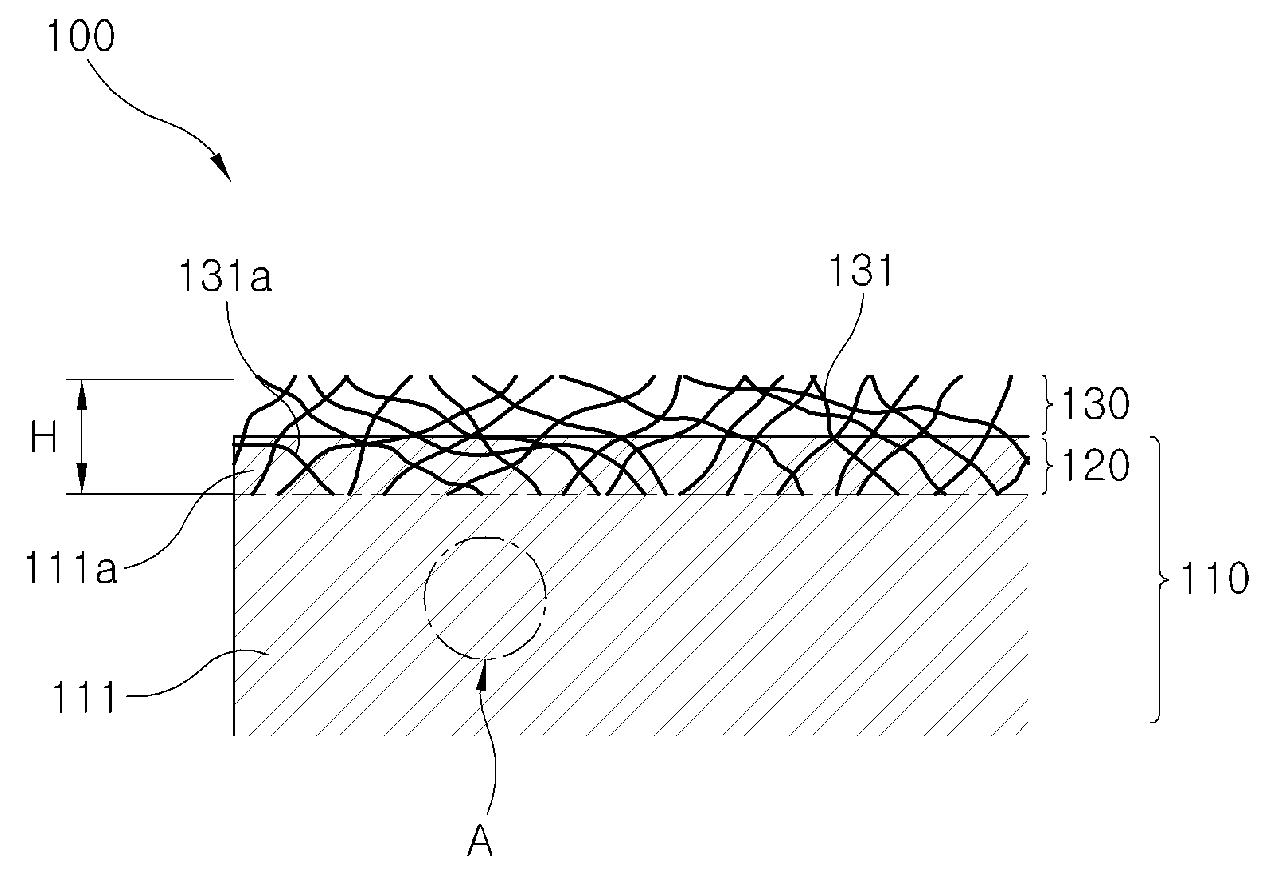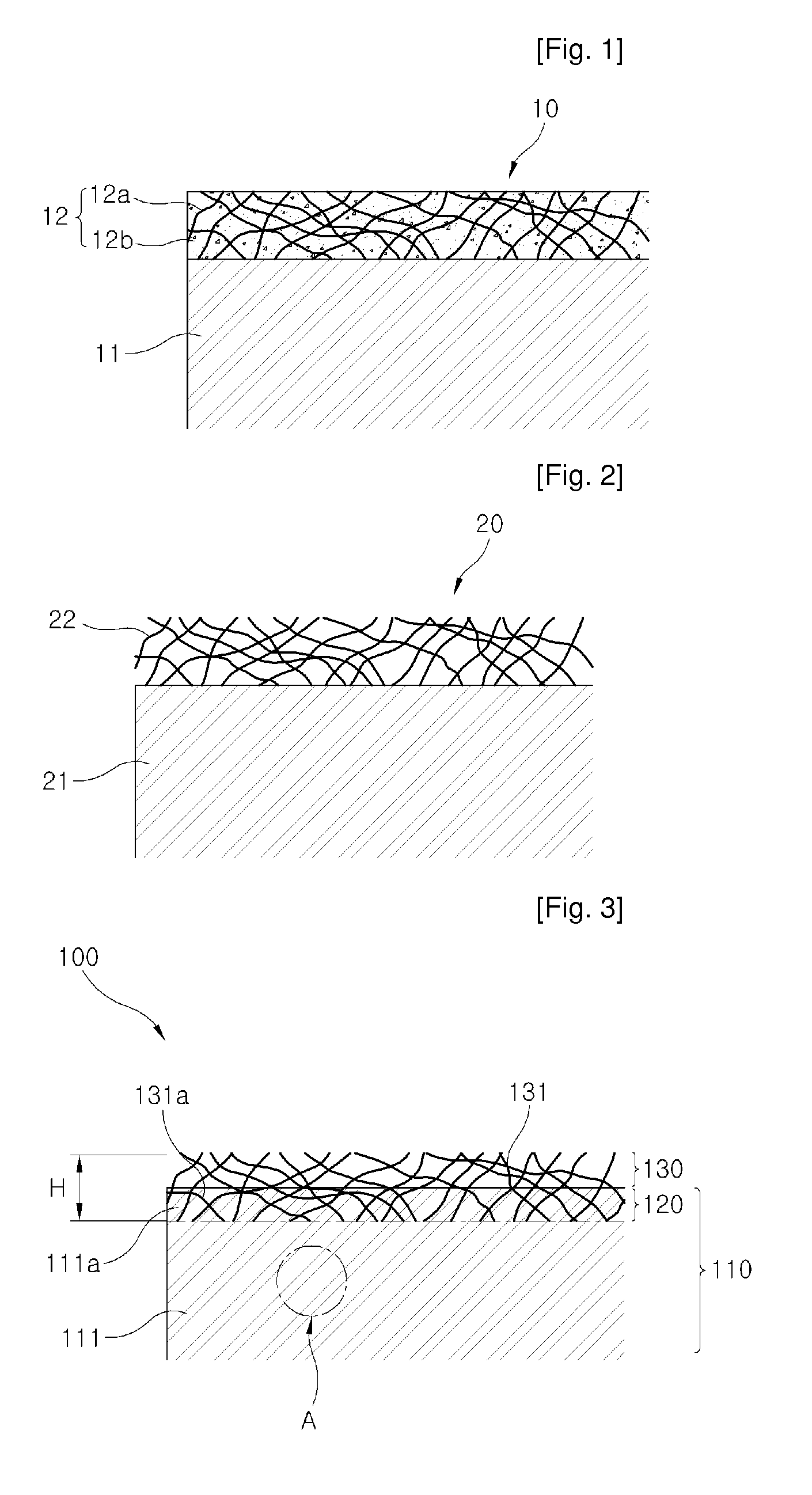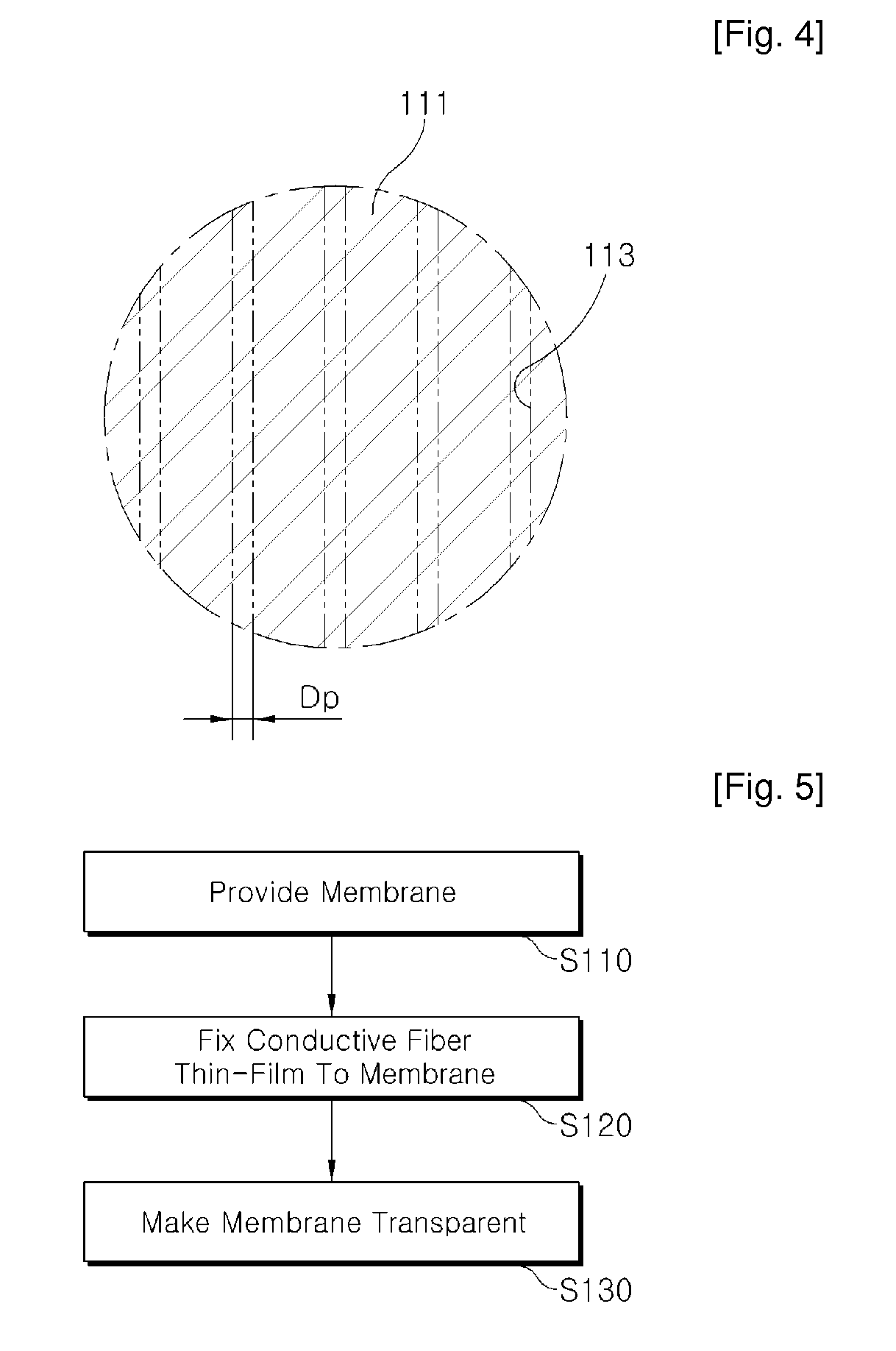Method for manufacturing conductive composite material
- Summary
- Abstract
- Description
- Claims
- Application Information
AI Technical Summary
Benefits of technology
Problems solved by technology
Method used
Image
Examples
embodiment 1
[0093]A carbon nanotube was used as the conductive fiber 130, and a polyethersulfone membrane with pores 113 each having a diameter of 0.2 mm was used.
[0094]The conductive fiber thin-film 130 was fixed to the membrane using the vacuum filter shown in FIG. 6. Referring to FIG. 6, 0.0015 wt % carbon nanotube aqueous dispersion solution 140 was prepared by adding 15 mg of a single-walled carbon nanotube 131 (mfg. by ILJIN Nanotech) to 11 of aqueous solution 141 in which 10 g of SDS as a surface active agent was dissolved, and applying 40 kHz ultrasonic waves of 45 W for 30 minutes.
[0095]Next, 80 ml of the carbon nanotube aqueous dispersion solution 140 from the container 150 was filtered by the large-sized vacuum filter 160 with a filtering area of 500 cm2.
[0096]In this case, the base layer 110 made of a polyethersulfone membrane with pores each having a diameter of 0.2 mm is provided in the large-sized vacuum filter 160. A solvent except the carbon nanotube was filtered through the po...
embodiment 2
[0102]The transparent conductive composite material 100 was prepared in the same method as that of Embodiment 1, except that a carbon nanotube / membrane composite material with a small amount of dimethylformamide (DMF) coated passed through a heating roller with a temperature of 80° C. to make the membrane film transparent.
[0103]The transparency, conductivity, uniformity of conductivity, and adhesion stability of the transparent film thus manufactured were examined in the same method as that of Embodiment 1. As a result, the transparent film was proved to have excellent transparency, conductivity, uniformity of conductivity, and adhesion stability, similarly to that of Embodiment 1.
embodiment 3
[0104]The transparent conductive composite material 100 was prepared in the same manner as that of Embodiment 1, except that during the process of making transplant the membrane having the carbon nanotube film formed thereon, an optically transparent polyethylene terephtalate film was stacked on a lower surface of a polymer film, and a carbon nanotube / membrane composite material with a small amount of dimethylformamide (DMF) coated passed through a heating roller with a temperature of 80° C. to make the membrane film transparent.
[0105]The transparency, conductivity, uniformity of conductivity, and adhesion stability of the conductive composite material thus manufactured were examined in the same method as that of Embodiment 1. As a result, the transparent film was proved to have excellent transparency, conductivity, uniformity of conductivity, and adhesion stability, similarly to that of Embodiment 1.
PUM
| Property | Measurement | Unit |
|---|---|---|
| Diameter | aaaaa | aaaaa |
| Temperature | aaaaa | aaaaa |
| Pressure | aaaaa | aaaaa |
Abstract
Description
Claims
Application Information
 Login to View More
Login to View More - R&D
- Intellectual Property
- Life Sciences
- Materials
- Tech Scout
- Unparalleled Data Quality
- Higher Quality Content
- 60% Fewer Hallucinations
Browse by: Latest US Patents, China's latest patents, Technical Efficacy Thesaurus, Application Domain, Technology Topic, Popular Technical Reports.
© 2025 PatSnap. All rights reserved.Legal|Privacy policy|Modern Slavery Act Transparency Statement|Sitemap|About US| Contact US: help@patsnap.com



